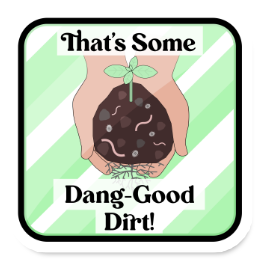Table of Contents
- What Causes Blossom End Rot?
- What Plants Can Get Blossom End Rot?
- How Does Soil pH Affect Calcium Transport?
- How Do You Treat Blossom End Rot?
* Our articles never contain AI-generated slop *
When your zucchini and summer squash tips turn brown and leathery before they're ripe, you may wonder what causes zucchini blossom end rot.
We're looking at root causes here, and then we'll delve into solutions you can use for preventing blossom end rot on your squash in the future.

What Causes Blossom End Rot?
Blossom end rot is caused by a calcium deficiency.
Disclaimer: This post may contain affiliate links. Refer to the privacy policy for more information.
You might assume that the solution is to add some eggshells or gypsum to your soil to counteract this, but not so fast.
Your soil may be lacking in calcium, but it's also important to understand that calcium is water-soluble. It's transported by water, so a lack of water may lead to a lack of calcium.
It might be a good idea to add some egg shells, gypsum, or lime to your garden, but make sure you are addressing any potential water issues above that.
Remember that lime makes soil more alkaline, so understand your soil pH before deciding to add lime.
If you garden in the desert like I do the hot, dry season often takes a toll on our plants in unexpected ways. One of these is with calcium transport.
We can sometimes get summer squash through the entire summer in Tucson, but it's reliant on a few factors. Only a very nutrient-rich soil will help zucchini and summer squash survive the 115F temperatures and sub-10% rH. Shade cloth definitely helps later in the summer.
Join The Grower's Community
A free & open space for anyone who is passionate about cultivation 🌱
Check It Out!
On the other hand, if you've got poor quality soil, with a lower organic matter content its ability to retain moisture will be severely reduced.
This, in turn, can lead to moisture problems during the dry season.
Moisture problems can then lead to calcium problems, which can then lead to blossom and rot.
The chain is complete, low quality soil in harsh conditions might be the culprit.
Always be sure to trace each symptom all the way back to the root cause, as adding calcium will not improve the moisture retention properties of depleted soil.
And remember that you should always add magnesium anytime you add calcium, because Cal + Mag go together.
What Plants Can Get Blossom End Rot?
While we're primarily discussing zucchini and summer squash here, blossom end rot can affect othe veggies too. Some that are commonly afflicted by this include:
- Tomatoes
- Peppers
- Summer Squash
- Zucchini
How Does Soil pH Affect Calcium Transport?
Plants can only uptake calcium when soil is within a specific pH range. Outside the range, calcium absorption declines sharply.
For most garden veggies, this is about 6.2 - 7.0
Below a 6.2 pH, calcium in soils begin to bind with metals like aluminum and iron - preventing plants from accessing the calcium.
Above a 7.0 pH, calcium in soils begin to bind with phosphates, forming calcium phosphate. In this form, calcium becomes less mobile and harder for plants to access.
Because soil pH affects the absorpton and availability of every element and nutrient for your plants, test your soil pH to is so important for determininf whether it's in the proper range for nutrient access.
To learn more about soil pH and nutrient lockout, check out our Guide to Soil pH.
How Do You Treat Blossom End Rot?
It might be worth adding some calcium to your soil, if your squash are suffering from blossom and rot.
That being said, this may not necessarily fix the root cause of the issue if it's water or pH related.
If blossom and rot shows up during the driest time of year, you may have a water issue.
Assuming you can afford to increase your watering, that may be a solution.
If you live in a desert like I do and have to conserve water, soil improvement may be the way to go. Higher quality soil retains more moisture.
Additionally, it's worth noting that adding lots of organic material as mulch to your garden will help lock in moisture, and slow down the drying out of your soil.
Mulch may be the cure to your calcium deficiency that's presenting as blossom end rot.
Dig Cool Merch?
Above all, improve your soil and issues like this will naturally be mitigated. Great soil and a thriving microbiome are the cornerstones of regenerative agriculture. Many issues will self-correct when your soil is dialed in right.
That's all for now, thanks for reading!
If you have any questions, comments, or would like to connect with fellow gardeners, head on over to the forum and post there.



![Don't Till Away Your Carbon [Neon]](/media/product_images/dont-till-away-your-carbon-[neon]_sticker_260x260.png)





![Don't Till Away Your Carbon [Neon]](/media/product_images/dont-till-away-your-carbon-[neon]_shirt_260x260.png)



















